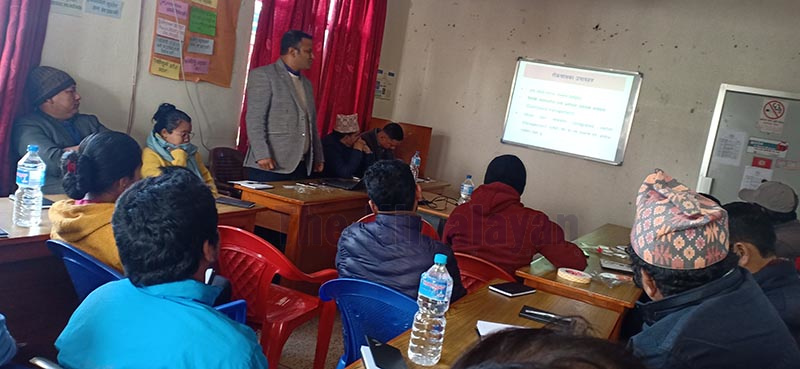Anti-filariasis campaign to begin from February 25
Kathmandu, February 3
The Epidemiology and Disease Control Division has said the mass drug administration campaign against filariasis will begin from February 25.
It also said that the campaign aimed to reduce prevalence of the disease from 1.47 per cent to less than one per cent this year.
DEC (Diethyl Carbamazine) and Albendazole will be administered to people in 13 districts — Jhapa, Morang, Dhankuta, Bara, Lamjung, Parbat, Baglung, Kapilvastu, Dang, Banke, Bardiya, Kailali and Kanchanpur. EDCD aims to administer anti-filariais drugs to 7,461,294 people.
READ ALSO: Elephantiasis on the rise in Lamjung; elimination target hard to meet by 2020
At least one health worker should cover 140 persons in hilly regions and 250 persons in the Tarai each day.
“The mass drug administration campaign will continue until we reduce the prevalence of the disease to less than one per cent,” said Dr Bibek Kumar Lal, director of Epidemiology and Disease Control Division.
Infants less than two years, pregnant women, new mothers, epilepsy patients and patients of chronic diseases will not be administered the drug.
“Some of the people have side effects such as dizziness, nausea, fever, headache or pain in the muscles or joints. But these effects will go away in a few hours.
Therefore, one should not refrain from taking the medicines fearing the side effects,” added Lal.
According to World Health Organisation, lymphatic filariasis is commonly known as elephantiasis.
Infection occurs when filarial parasites are transmitted to humans through mosquitoes.
Three different filarial species — Wuchereria bancrofti, Brugia malayi and Brugia timori — can cause lymphatic filariasis in humans.
Most of the infections in South Asia are caused by Wuchereria bancrofti, according to Dr Lal. Lymphatic filariasis impairs the lymphatic system and can lead to abnormal enlargement of body parts, causing pain and severe disability.
The infection spreads from person to person by the bite of culex mosquito.
The adult worm lives in the human lymph vessels, mates, and produces microfilariae or microscopic worms. It circulates in the person’s blood and infects the mosquito when it bites a person who is infected. Microfilariae grow and develop in the mosquito. When the mosquito bites another person, the larval worms pass from the mosquito into the human skin.
According to WHO, 893 million people in 49 countries worldwide remain threatened by lymphatic filariasis and require preventive chemotherapy to stop the spread of this parasitic infection.






